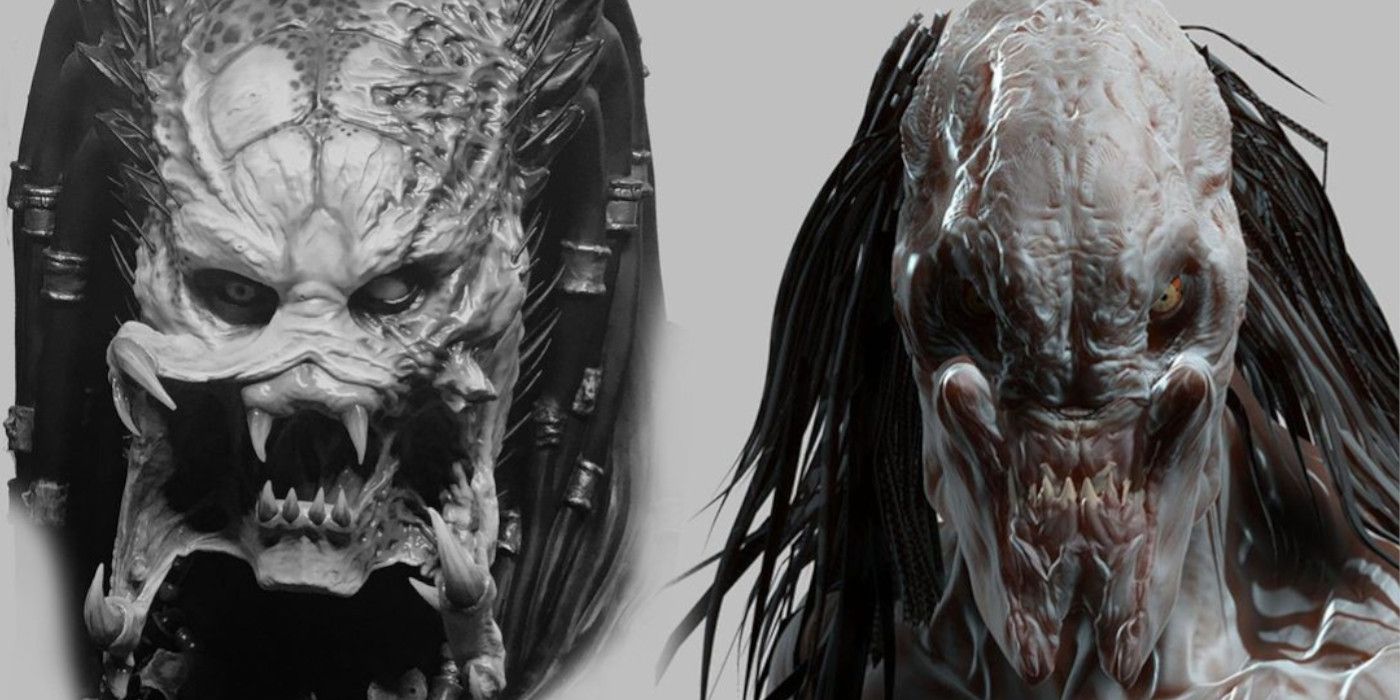Concept art from Prey shows how different the design of the film’s Predator is from the creature’s cinematic predecessors. Set nearly 300 years prior to the original 1987 Predator film that starred Arnold Schwarzenegger, Prey is the fifth film in the long-running sci-fi franchise. Showered with praise by critics and audiences alike, the exclusive streaming release of the franchise prequel would end up becoming the most watched premiere on Hulu in the United States, as well as on Star in international markets.
Directed by 10 Cloverfield Lane’s Dan Trachtenberg, Prey made several changes to the design of the alien creature known as the Predator. Simplifying the alien’s technology to present a “Feral Predator”, Prey’s Predator no longer sports the instantly recognizable metal helmet and instead wears one that appears to be made from the skull of some unknown creature. This helmet also leaves the creature’s trademark mandibles to be exposed. Gone too is the typical shoulder-mounted plasma canon, and in its place, the film’s alien makes use of a laser-guided dart thrower. These changes would not be the only modifications to the key creature’s design, and Prey’s alien also experienced changes to the design of its head, removing the creature’s spiked crown that led into its dread-like tendrils.
Recently, veteran special effects artist Alec Gillis took to Instagram to share a piece of concept art that provides a side-by-side comparison of the Predator’s new look with a more traditional version of the creature as seen in Alien Vs Predator: Requiem. Gillis notes that the changes to the creature’s original Stan Winston design would not go unnoticed by audiences, and certainly not without some measure of controversy. Check out Gillis’ post below:
It would seem, however, that these changes to the main creature design certainly did not impede audiences from engaging positively with the franchise’s latest film. Widely hailed as the best Predator film since the original, Trachtenberg’s unique take on the property has reinvigorated love for the franchise which has slowly soured over the years due to a series of less-than-successful sequels. The latest film’s approach to bringing the creature’s design back to basics also mirrors that of Trachtenberg’s approach to the plot itself. The film’s simplicity, and focus on character-driven drama, allow audiences to be drawn into the escalating struggle against the more primitive “Feral Predator”.
While no sequel has been officially announced, Trachtenberg has teased the possibility of the franchise continuing after Prey’s pheromonal release. Even the film’s end credit teases the possibility of a sequel. If 20th Century Studios do indeed decide to greenlight another film in the Predator franchise, perhaps audiences will get a chance to see even more unique design variations to the alien hunter. Prey has already proven that presenting a different-looking Predator can still work in the context of a well-made film.
Source: Alec Gillis

